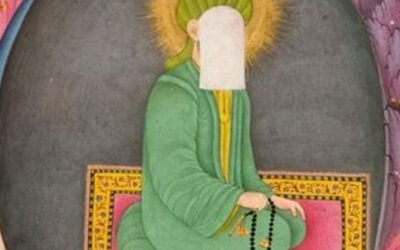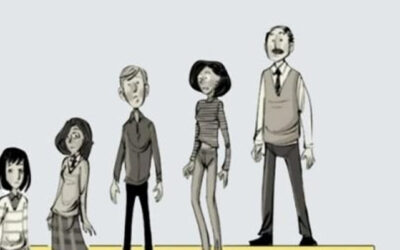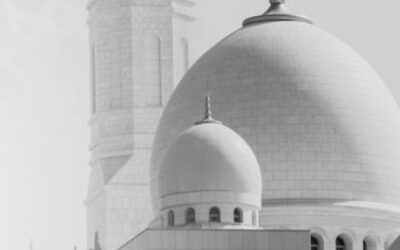Demographic Shifts in Europe: Analyzing Fertility Rates and Population Trends

To keep a population stable, no growth, no shrink, we need the The total fertility rate (TFR) “kids per woman” to be 2.1 .[1]
Europe’s native TFR is about 1.5, been that way for decades. Japan’s at 1.3, the U.S. hovers around 1.7. [2]
Muslim-majority countries? Way higher. Globally, Muslim women average 2.9 kids, down from 4.3 in 1990, sure, but still outpacing everyone else.
In the Middle East and North Africa (Egypt, Iraq, Morocco for example) TFR’s around 2.8-3.0. Sub-Saharan Africa, where Islam’s growing fast, is nuts: Niger’s at 6.6, Mali 5.8, Somalia 5.5. These are Muslim-majority hotspots feeding migration to Europe. [3]
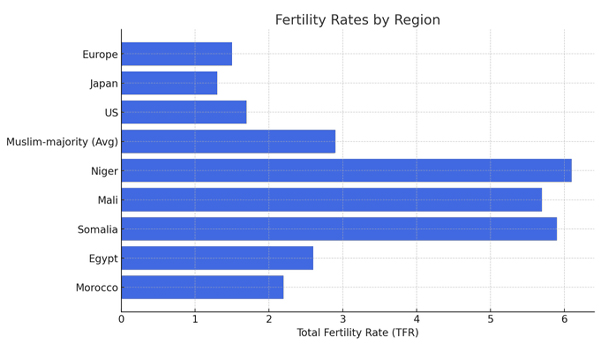
Fertility Rates by Region
Now zoom into Europe itself. France’s Muslim women clock in at 2.8-3.0 kids, the UK’s around 2.9, Germany’s 2.5-2.7. Compare that to native French (1.8), Brits (1.6), or Germans (1.5), and you see the split. It’s not close.[4]
Islam puts a premium on family, big ones. Marriage rates are sky-high, divorce is rarer, and kids are a duty, not a choice. In Pakistan, 94% of women marry by 35; in Sweden, it’s 60%. Add poverty and education lags in sending countries, less schooling, more babies. [5]
Even in Europe, second and third generation Muslims keep higher TFRs than natives, because tradition sticks.
Europe’s 25 million Muslims, 6% of the population, aren’t evenly spread. Cities amplify it: London’s 15% Muslim, Marseille 20%, Amsterdam 14%. Their TFR’s 2.6-3.0 means growth, while native 1.5 means decline.
Take France: 8-10% Muslim now, maybe 12-15% by 2050, even with zero new migration. because a Muslim woman born in 2000 might have three kids by 2030; her native neighbor has one, maybe two. Fast-forward 30 years, those Muslim kids are having kids, 2.5 each, while natives limp along at 1.5. Exponential, not linear.
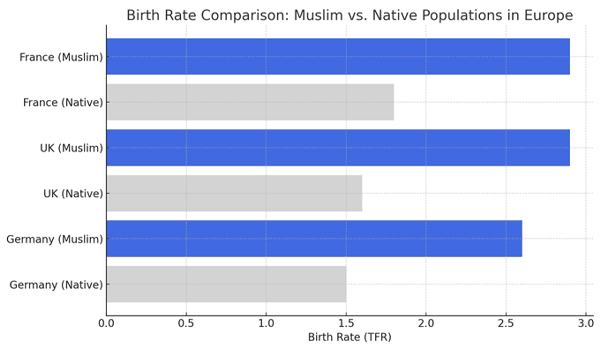
A Pew Research study in 2017 showed that Europe’s Muslim population could jump from 25 million to 35 million by 2050 under a “zero migration” scenario, purely from births. [6]
Medium migration? 58 million, 11% of Europe. High migration? 75 million, 14%.
Sweden’s Muslim share could triple to 20-30%. [7]
Germany’s native births dropped 11% from 2015-2020; Muslim births held steady or rose. It’s a slow avalanche.
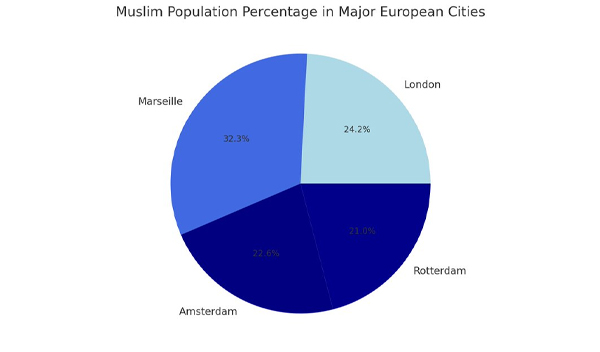
Projected Muslim Population in Europe by 2050
This isn’t new. Look at Gaza. Israel pulled out in 2005, left it to the Palestinians, birth rates stayed high, 4.0 then, 3.4 now. Instead of building a state, Hamas built a war machine, fueled by a young, growing population.
Europe’s not Gaza, but the parallel’s there: high birth rates in unassimilated pockets, like Molenbeek or Malmö, don’t breed stability. They breed leverage.
In 2021, 25% of births in England and Wales were to foreign-born moms, many Muslim. France? Over 30% in some regions. That’s not integration; that’s replacement.
Who saw this coming? Not the dreamers preaching multiculturalism. The skeptics knew demographics are destiny. Europe’s leaders banked on assimilation, betting Muslim TFR would crash to native levels. Nope. It’s dipping, 2.9 globally in 2010 to 2.6 now, but not fast enough.
Turkey’s second-generation in Germany still hits 2.4; Algeria’s in France, 2.8. Native rates aren’t budging up. By 2100, Muslims could be 20% of Europe, maybe more in the west. Cities flip faster, Rotterdam’s already there. [8]
This isn’t about “overpopulation.” It’s about power. A shrinking native Europe, down 150 million by 2100, faces a Muslim bloc that’s young, fertile, and increasingly unmoored from secular norms.
In 2023, 40% of French Muslims under 25 said sharia trumps French law. Birth rates fuel that mindset.
Look at Lebanon: Muslims outbred Christians, flipped it from 60% Christian in 1911 to 60% Muslim by 2011. Europe’s not Lebanon, yet. But give it a century. [9]
[1] OECD. “Fertility Rates.” OECD Data. Accessed February 2025.
https://www.oecd.org/en/data/indicators/fertility-rates.html.
[2] Population Reference Bureau. “World Population Data: Fertility Rates by Country.” PRB International Indicators. Accessed February 2025.
https://www.prb.org/international/indicator/fertility/map/country.
[3] Ibid.
[4] Ibid.
[5] Ibid.
[6] Pew Research Center. “Europe’s Growing Muslim Population.” Religion & Public Life. November 29, 2017. Accessed February 2025.
https://www.pewresearch.org/religion/2017/11/29/europes-growing-muslim-population.
[7] Ibid.
[8] Ezdi, Sehar, and Ahmet Melik Baş. “Gender Preferences and Fertility: Investigating the Case of Turkish Immigrants in Germany.” Demographic Research 43, no. 3 (2020). Accessed February 2025.
https://www.demographic-research.org/articles/volume/43/3.
[9] Including the forced displacement of Christians due to the rise of Islamic militant groups such as the Fedayeen. The waves of violence, particularly during the Lebanese Civil War and the broader regional conflicts, drove many Christians to flee the country, accelerating the demographic shift.
![]() About the Author
About the Author

DANNY BURMAWI
Danny Burmawi is an Author, speaker, an advocate for religious liberty, and rational thought, a content creator, and social entrepreneur with a passion for transformative media and advocacy.
Related Posts
Muhammad: The Man Who Replaced God in Islamic Consciousness
Muhammad: The Man Who Replaced God in Islamic Consciousness In Islamic practical theology, Muhammad does not merely represent a prophet, he overshadows Allah himself. While Muslims claim to worship one God, the emotional, psychological, and even liturgical weight...
Islam and Lawrence Kohlberg 6 stages of moral development
Islam and Lawrence Kohlberg 6 stages of moral development In psychology, there's a theory by Lawrence Kohlberg that explains how people develop their sense of right and wrong. He says we grow through three main levels, six stages in total. As we mature, we’re...
Academia’s Manufactured Islam and Its Dangerous Consequences
Academia’s Manufactured Islam and Its Dangerous Consequences For decades, Western academia has attempted to redefine Islam, presenting it in a sanitized, palatable form for Western audiences. Scholars in postcolonial studies, interfaith dialogue, and Islamic studies...
